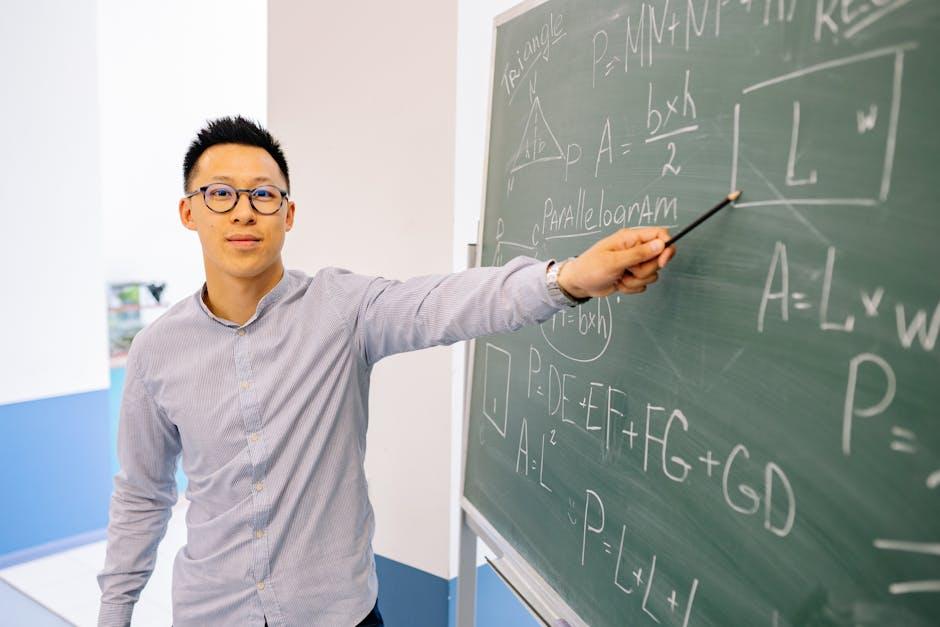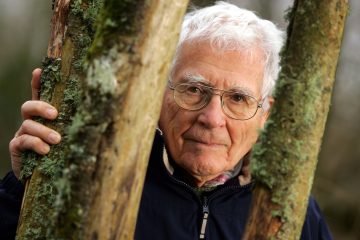Table of Contents
- Understanding James Lovelocks Gaia Theory and Its Environmental Implications
- The Evolution of James Lovelock’s Ideas on Climate Change and Sustainability
- James Lovelocks Contributions to Science and Technology: A Legacy of Innovation
- Practical Applications of Lovelocks Theories in Modern Environmental Practices
- Engaging with Lovelocks Vision: Recommendations for a Sustainable Future
- Q&A
- In Conclusion
Understanding James Lovelocks Gaia Theory and Its Environmental Implications
The Gaia Theory, proposed by James Lovelock, revolutionizes our understanding of Earth as a complex, self-regulating system. At its core, this theory suggests that all living organisms, along with their inorganic surroundings, cooperate to maintain conditions favorable for life. This interdependence challenges traditional views that see organisms as separate entities, instead portraying them as integral parts of a larger whole. The implications are profound, emphasizing a totality where humanity plays a critical role in both maintaining and disrupting planetary health.
By acknowledging Earth’s biosphere as a dynamic entity, Lovelock’s theory encourages a reevaluation of our environmental responsibilities. Key aspects of Gaia Theory highlight:
- Interconnectedness: The relationships between species and their environments foster resilience.
- Self-Regulation: Biological and geological processes interact to sustain climate stability.
- Feedback Mechanisms: Natural responses to environmental changes help mitigate extremes.
These concepts spark significant discussions about the role of humanity in ecological stewardship. The potential for regenerative practices rooted in Gaia Theory is exemplified in sustainable agriculture and conservation efforts. Furthermore, the theory serves as a call to action, urging society to rethink policies regarding climate change and biodiversity loss. Understanding our role within this larger framework may well determine the future of life on our planet.

The Evolution of James Lovelock’s Ideas on Climate Change and Sustainability
James Lovelock’s insights on climate change and sustainability can be traced back to his development of the Gaia hypothesis in the 1970s. This theory proposed that Earth functions as a self-regulating system, where living organisms and their inorganic surroundings interact to maintain conditions suitable for life. Lovelock’s initial ideas sparked discussions about the interconnectedness of life and the environment, urging a broader perspective on ecological relationships. As the urgent threats of climate change began to surface, he emphasized the necessity of understanding and respecting nature’s complex systems.
As scientific understanding evolved, so did Lovelock’s approach to climate change. He transitioned from a passive observer to an advocate for active engagement in environmental issues. In recent years, he has highlighted the following key aspects of sustainability:
- Technological Innovation: Emphasizing the role of technology in addressing climate challenges.
- Renewable Energy: Advocating for a rapid shift towards renewable sources to mitigate impact.
- Adaptation Over Mitigation: Suggesting that adapting to climate change might now be more critical than simply attempting to prevent it.
In his later works, Lovelock became increasingly vocal about the urgency of taking action against climate change. His perspective reflects a mature understanding that while humanity has greatly affected Earth’s systems, we also possess the capability to innovate and restore balance. He has called for a global, coordinated response, pushing for policymakers and individuals alike to recognize their responsibilities. Lovelock’s evolving thoughts serve as a reminder of the profound relationship between humankind and nature and the imperative to foster a more sustainable future.

James Lovelocks Contributions to Science and Technology: A Legacy of Innovation
James Lovelock’s contributions to science and technology are multifaceted, demonstrating a unique blend of environmental awareness and innovative thinking. He is best known for the Gaia Hypothesis, which he proposed in the 1970s. This groundbreaking theory suggests that Earth functions as a self-regulating system where biotic and abiotic components interact to maintain conditions conducive to life. Lovelock’s perspective shifted the scientific community’s understanding of the Earth, emphasizing the intricate relationships between organisms and their environment.
In addition to his ecological theories, Lovelock has made substantial advancements in technology, particularly in the field of environmental monitoring. He developed the electron capture detector, a revolutionary instrument that detects trace amounts of chemicals in the environment, notably persistent organic pollutants. This technology has had significant applications in various fields, including atmospheric science and toxicology. His inventive spirit is highlighted by his commitment to addressing climate change and environmental degradation through technological solutions.
Another remarkable contribution from Lovelock is his advocacy for the use of renewable energy. He has been a vocal proponent of technologies that capitalize on natural processes to generate power without harming the planet. His exploration of topics like the utilization of waste heat and solar energy has inspired future generations of scientists and inventors. The legacy of Lovelock’s work is not only in his theoretical contributions but also in the practical applications that pave the way for more sustainable practices in modern society.

Practical Applications of Lovelocks Theories in Modern Environmental Practices
James Lovelock’s theories, particularly his Gaia hypothesis, have profoundly influenced modern environmental practices, providing a theoretical framework that emphasizes the interconnectedness of life and the Earth’s systems. By viewing the planet as a self-regulating entity, practitioners in ecology and sustainability have adopted a holistic approach to environmental management. This paradigm shift encourages decision-makers to recognize the impact of human activities not only on individual species but on the entire ecosystem. As a result, policies are crafted with a focus on preserving ecological balance rather than merely targeting specific environmental issues.
One notable practical application of Lovelock’s principles is in climate change mitigation strategies, where a systems thinking approach is employed. For instance, cities are increasingly implementing green infrastructure, such as urban forests and permeable pavements, to enhance natural processes that regulate temperature and manage stormwater. These solutions not only reduce the urban heat island effect but also promote biodiversity, creating habitats within the urban landscape. By treating these efforts as interconnected components of the larger ecological system, urban planners can develop more sustainable and resilient cities.
Moreover, Lovelock’s theories have inspired innovative agricultural practices that embrace permaculture and regenerative farming. These methods champion biodiversity and soil health as vital aspects of food production. Farmers, guided by the idea that farming systems should mimic natural ecosystems, are using techniques such as crop rotation, intercropping, and no-till farming to enhance soil vitality and reduce chemical dependency. By focusing on the equilibrium between agricultural practices and natural processes, producers can sustainably meet food demands while protecting the Earth’s ecosystems.

Engaging with Lovelocks Vision: Recommendations for a Sustainable Future
Embracing the visionary insights offered by James Lovelock, we recognize the need for action in the face of environmental challenges. His perspective urges us to rethink our relationship with nature and adopt practices that support the Earth’s ecosystems. Adopting a regenerative approach to agriculture is one pivotal recommendation; this can be achieved through:
- Permaculture: Designing agricultural systems that mimic natural ecosystems.
- Sustainable farming techniques: Implementing crop rotation and organic farming to enhance soil health.
- Agroforestry: Integrating trees and shrubs into farmland to boost biodiversity and mitigate climate change.
Furthermore, Lovelock’s vision emphasizes the necessity to shift towards renewable energy sources. This transformation is vital not only for reducing carbon emissions but also for ensuring long-term energy security. Communities can contribute by:
- Investing in solar and wind technologies: Harnessing natural resources to reduce dependence on fossil fuels.
- Encouraging local energy production: Empowering neighborhoods to become energy self-sufficient through microgrids.
- Promoting energy efficiency: Educating citizens on reducing consumption and optimizing energy use in homes and businesses.
Lastly, strengthening our connection to nature and fostering environmental stewardship in urban settings can significantly impact sustainability efforts. Lovelock’s insights encourage initiatives that focus on urban greening, such as:
- Community gardens: Creating green spaces that enhance urban biodiversity and provide food security.
- Green infrastructure: Integrating parks, green roofs, and walls to absorb rainwater and lower city temperatures.
- Educational programs: Raising awareness about sustainable practices and the importance of ecosystems among city residents.
Q&A
Q&A with James Lovelock: The Visionary Behind Gaia Theory
Q: Who is James Lovelock and what is he best known for? A: James Lovelock is a prominent British scientist, environmentalist, and inventor, celebrated primarily for his groundbreaking work on the Gaia Hypothesis. Formulated in the 1970s, this theory posits that Earth functions as a self-regulating system, where organisms interact with their inorganic surroundings to maintain conditions conducive to life. Lovelock’s ideas have significantly influenced ecological science and environmental policy.Q: What motivated Lovelock to propose the Gaia Hypothesis? A: Lovelock was compelled by his fascination with the intricate relationship between life and the environment. Observing how biospheres on Earth regulate themselves, he sought to frame this complexity through scientific inquiry. His background in biochemistry and a stint as a NASA consultant studying Mars helped shape his views on the Earth’s unique systems and their fragility.
Q: How has the scientific community responded to Lovelock’s Gaia Hypothesis? A: The response to the Gaia Hypothesis has been mixed. Some scientists view it as an innovative framework for understanding ecology and the interconnectedness of life, while others criticize it for being overly simplistic or anthropocentric. Despite the debate, Lovelock’s ideas have prompted a reevaluation of ecological thinking and fostered discussions about climate change and sustainability.
Q: In addition to the Gaia Hypothesis, what other contributions has Lovelock made to science? A: Beyond the Gaia Hypothesis, Lovelock invented the electron capture detector, a device that revolutionized environmental monitoring by detecting trace amounts of pollutants. His contributions to climate science, including early warnings about global warming, have established him as a pioneering thinker in environmental issues.
Q: What are Lovelock’s views on climate change? A: Lovelock has been an outspoken advocate for acknowledging the severe impacts of climate change. He has warned about the existential threat it poses to humanity and often emphasizes the need for urgent action to mitigate these effects. His writings encourage a blend of appreciation for technological innovation and an understanding of ecological limits.
Q: How has Lovelock’s personal philosophy influenced his scientific work? A: Lovelock’s approach is deeply influenced by a blend of scientific rigor and philosophical inquiry. He embraces a worldview where scientific understanding coexists with a profound respect for the natural world. This reflects in his belief in the necessity of living harmoniously within our environment and considering the ethical implications of scientific advancement.
Q: What legacy does Lovelock hope to leave behind? A: Lovelock aims to inspire future generations to cultivate a deeper appreciation for the planet’s complexities. He hopes that his work will encourage individuals and societies to take proactive steps towards maintaining the Earth’s delicate balance and to foster a collective responsibility for our environment.
This Q&A provides a glimpse into the life and thoughts of James Lovelock, a figure whose ideas continue to resonate deeply within scientific and environmental discussions today.



0 Comments